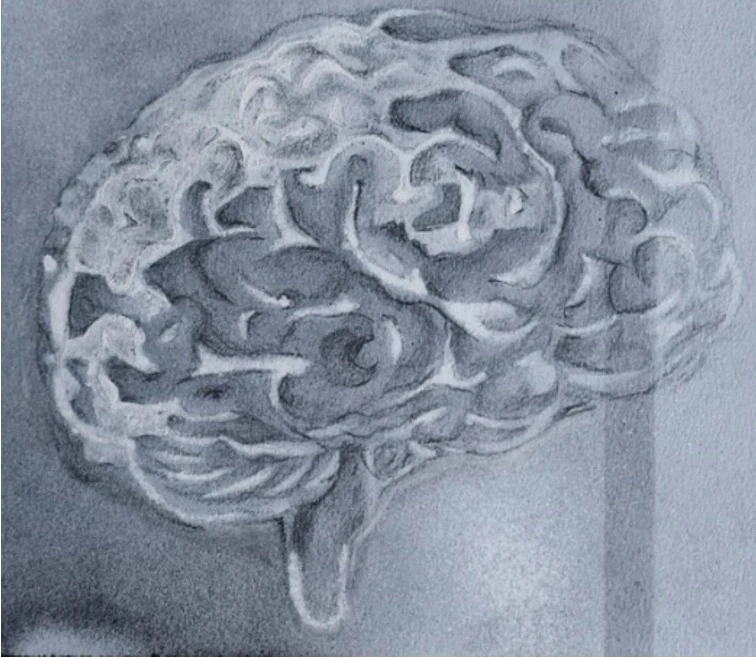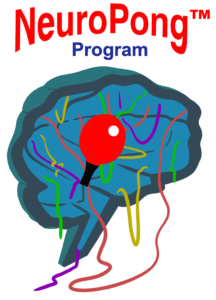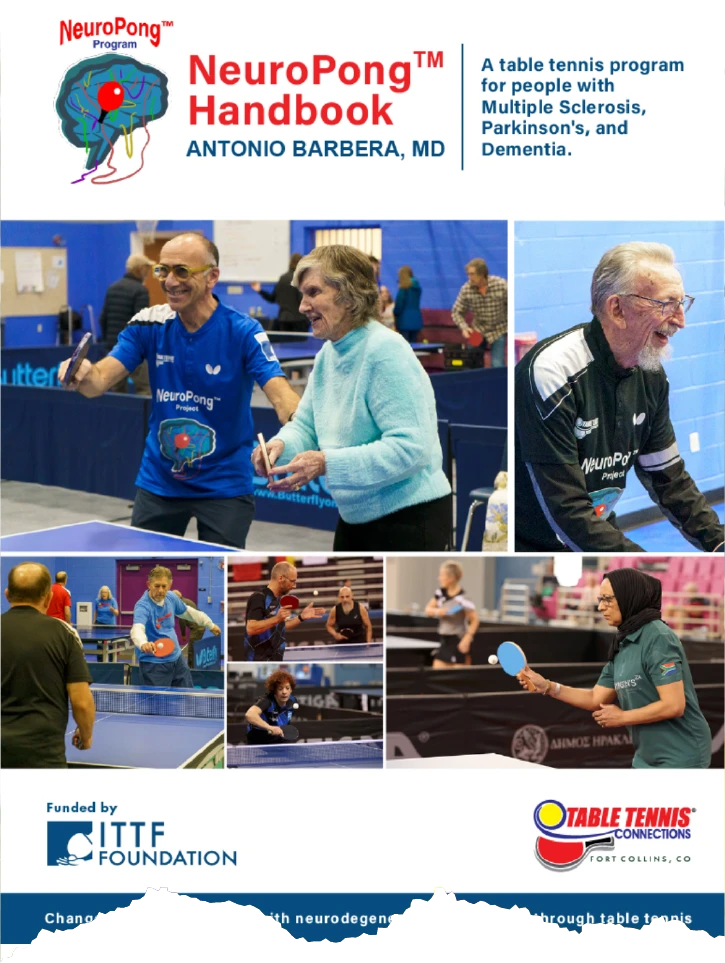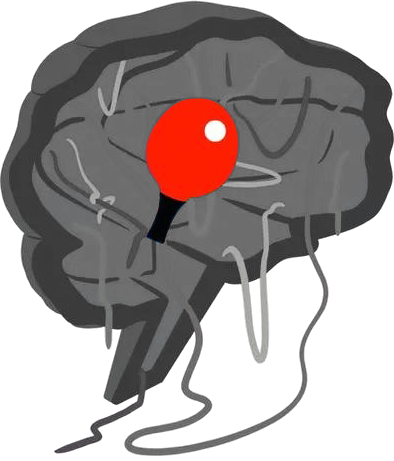The NeuroPong™ Journey
NeuroPong™ harnesses the power of table tennis to improve physical, cognitive, and emotional well-being for those living with neurodegenerative conditions. Join us in creating a community of hope and healing through play.

The Founder and CEO
Antonino Barbera - Bridging Science, Sport, & Humanity
Antonio is a physician, recently retired after 31 years of practice. After his diagnosis of Multiple Sclerosis in 2016, Antonio returned to playing table tennis. Rediscovering the benefits that table tennis offers to people with neurodegenerative conditions, Antonio decided to raise the awareness of this sport for everyone, regardless of age, gender, religion, ethnicity or physical/mental capability. One of the programs main goals is to provide solid scientific knowledge behind the benefits that table tennis brings to the brain, but also to the body and the human spirit. Antonio envisions his role as the liaison among multiple experts: neurologists, teachers, parents, behavioral counselors, physical and occupational therapists, table tennis coaches and table tennis players. With the contribution of all these experts, Antonio wants to enhance and share the benefits while tracking the data and beneficial results that will help transform the quality of life for all of those involved in the NeuroPong program… whether they be caregivers, participants, coaches or supportive family members.
The Board
Meet the Board Members
Enhance cognitive skills and strategic thinking with NeuroPong—where board members sharpen their minds through gameplay.
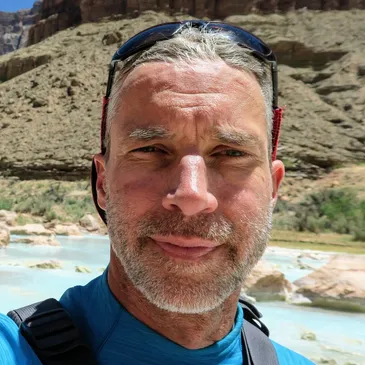
Randy How,
Secretary
Randy attended Colorado State University and received a Bachelor of Science in Landscape Architecture, with an emphasis in GIS and Remote Sensing. For the past 20 years, he has developed geospatial applications using Satellite Imagery for Airbus Defense and Intelligence. He enjoys the Colorado outdoors and table tennis, which has become one of his favorite pastimes.

Quincy Meisman,
Treasurer
Quincy started playing table tennis in 2018 when she moved to Fort Collins. She soon fell in love with it; Quincy now refers to it as her healthy obsession! She is always working on making herself into a better player. This has been incredibly gratifying to her and has fueled her motivation to become a better person as well. Quincy just graduated in computer science and linguistics from Colorado State University. For Quincy, table tennis has become a vehicle not only for physical and mental exercise, but also creates new and engaging social connections.

Edward Norman,
Consultant
Dr. Norman was diagnosed with Parkinsonism in 2016 and retired from medical practice in 2017. Throughout his career, Dr. Norman has been convinced by the overwhelming data that physical activity is a pathway to slowing down the aging process and the progression of numerous medical conditions. Naturally, this research is now extending to table tennis and its beneficial effects for those with neurologic conditions. Dr. Norman has picked up the racket he enjoyed as a kid, and committed to improving NeuroPong and his table tennis game!
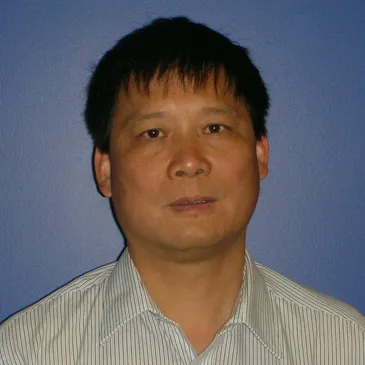
Dongfen Pan,
Consultant and Coach
Dongfeng Pan grew up in China playing table tennis in primary school. After graduating from college with a bachelor's degree in applied math, he began his career as a math teacher in China for the following 5 years. He then moved to the United States to pursue a master’s in applied math and computer science at Colorado State University and the University of Colorado in Boulder. Dongfeng is currently a happily retired software engineer, and spends his free time playing table tennis, hiking, and photography. After learning of the benefits table tennis can offer to people with neurological disorders, Dongfeng has enjoyed engaging with and guiding those with Multiple Sclerosis and Parkinson's, helping them discover the sport and its positive effects.

Dave Hanenburg
Dave is a passionate advocate for neurorehabilitation through sport. With a lifelong love for the game—having first picked up a paddle in 1967 at six years old – he deeply understands the physical, cognitive, and social benefits of table tennis. In 2023, at the age of 61, he was diagnosed with Parkinson’s disease, a turning point that fueled his commitment to helping others facing similar neurological challenges. After a successful career in the technology industry, Dave retired in 2024, shifting his focus to health, family, and the growth of NeuroPong’s mission. Blending personal insight with a drive for innovation in therapeutic interventions, he is living proof that movement is medicine—and that the power of sport can foster resilience, community, and hope. Dave resides in Castle Rock CO, and remains deeply committed to changing lives, one game at a time.
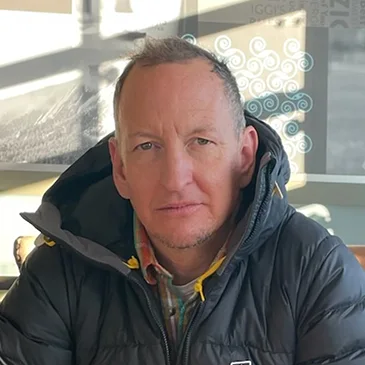
Chris O’Neill
Chris is a Private Wealth Advisor and competitive tennis player residing in Superior, Colorado. Chris’s passion for the NeuroPong program stems both from his love of Table Tennis, but also due to the fact that a close family member was recently diagnosed with Parkinsons. As a board member, Chris plays a vital role in guiding the organization's mission to harness the power of table tennis as a therapeutic activity that helps slow the progression of neurological conditions. With a collaborative spirit and a passion for making a tangible difference in the lives of others, Chris works alongside other NeuroPong board members to create strategic initiatives, build partnerships, and ensure the sustainability of the organization's future.
Timeline of Key Moments in the NeuroPong™ Journey

March 18, 2016
First MS Attack & Initial Recovery

“Less than 12 months after my first attack, I had another one. The date was March 4, 2017. And this time, I lost all sensation and motor control of my left arm. The so-called ‘disease-modifying drug’ I was on did not prevent another exacerbation. Since recovery was not progressing as fast as my leg, I had to end my 31-year career as an Obstetrician and Gynecologist. After nine months, I was able to partially recover the function of my left arm and felt hopeful starting another medication. Among the many Multiple Sclerosis discomforts, the worst symptom of my condition is a sensation of chest compression, known as the ‘MS hug.’ This ‘hug’ feels like an uncomfortable, sometimes painful feeling of tightness or pressure around my chest. The peculiarity of this sensation is its constant 24/7 presence, changing location in my chest and never disappearing. Sometimes I talk about it as ‘the elephant sitting on my chest,’ changing position at its own pleasure.”

November 2019
Rediscovering Table Tennis
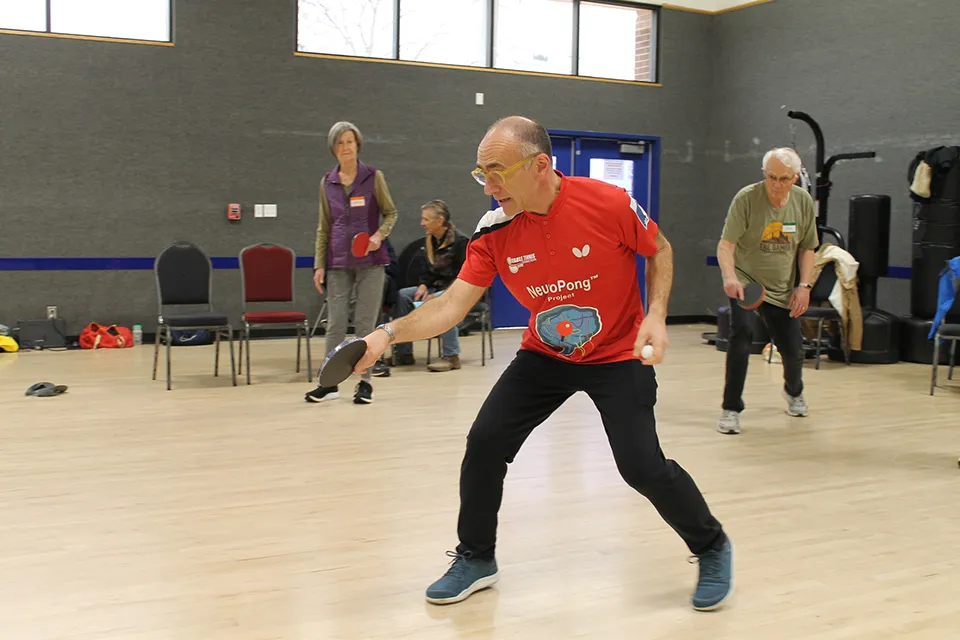
“Since this sport was relieving my discomfort, I started researching if it could be integrated into the lives of other people living with MS. I learned that if we challenge our brain, one specific area called the ‘hippocampus’ is able to produce new cells (a process called neurogenesis) and these cells may create new neuronal pathways, new… connections (a phenomenon called neuroplasticity)! I found some scattered information coming from a neurologist and from some people with MS who love table tennis and had found benefits themselves. Furthermore, I learned a few groups in the world were using table tennis to help people living with Parkinson’s and Dementia.”

2020
Development of the NeuroPong™ Program
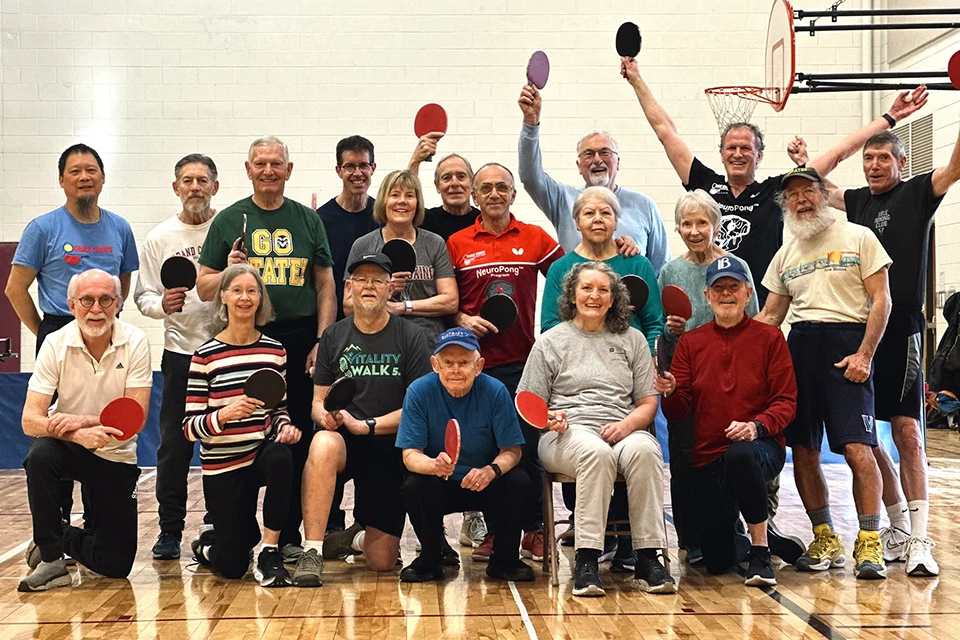
“Experiencing what table tennis was doing for me, I started wondering if it could provide a challenging stimulus for others to similarly help their neurogenesis. I became the Founder and CEO of a 501(c)(3) non-profit organization called ‘Table Tennis Connections.’ The uniqueness of our organization is promoting fun while playing table tennis. The core of our activity is the NeuroPong™ Program, a table tennis program designed for and tailored specifically for people with neurodegenerative conditions.”
“I couldn’t move my right leg. It was completely paralyzed, and I lacked any sensation. The date was March 18, 2016. I went from being an active 55-year-old Obstetrician and Gynecologist to someone who had lost his physical capabilities. After three months of intense physical therapy, I was lucky enough to drop the cane I had started using. These months were very hard though, as I had to learn how to walk again! If you have ever experienced the functional loss of a limb (like after an accident or major surgery), you can understand how intense this kind of recovery can be.
Something that was such a ‘natural activity’ was now requiring an intense physical and emotional effort, and full recovery was neither known nor guaranteed. Even though I had no idea how to engage my right leg for a long time, I was very fortunate in recovering my function. Since that day, I made a conscious decision to no longer use elevators. I plan to never take for granted the use of my leg again.”

March 4, 2017
Second MS Attack & Career Transition

I played table tennis at the age of 16, and only for a few months. It was not until late November 2019, some 40 years later, that I started playing some table tennis in my garage with my son. After a few days, to my surprise and pleasure, I realized that, when playing this sport, my elephant was leaving my chest and sitting in a corner; my mind was able to forget about my chest discomfort, at least temporarily.”
“NeuroPong utilizes table tennis as a form of prehabilitation and neurorehabilitation and can be implemented at any stage of Multiple Sclerosis, Parkinson’s, or dementia in its various forms. It can aid in recovery from an acute attack, or to prevent future episodes while delaying the progression of the underlying condition. The ultimate aim of our program is to improve the quality of life of each individual involved as well as the lives of caregivers and partners.”

2021
Founding of Table Tennis Connections


March 18, 2016
First MS Attack & Initial Recovery

“I couldn’t move my right leg. It was completely paralyzed, and I lacked any sensation. The date was March 18, 2016. I went from being an active 55-year-old Obstetrician and Gynecologist to someone who had lost his physical capabilities. After three months of intense physical therapy, I was lucky enough to drop the cane I had started using. These months were very hard though, as I had to learn how to walk again! If you have ever experienced the functional loss of a limb (like after an accident or major surgery), you can understand how intense this kind of recovery can be.
Something that was such a ‘natural activity’ was now requiring an intense physical and emotional effort, and full recovery was neither known nor guaranteed. Even though I had no idea how to engage my right leg for a long time, I was very fortunate in recovering my function. Since that day, I made a conscious decision to no longer use elevators. I plan to never take for granted the use of my leg again.”

March 4, 2017
Second MS Attack & Career Transition

“Less than 12 months after my first attack, I had another one. The date was March 4, 2017. And this time, I lost all sensation and motor control of my left arm. The so-called ‘disease-modifying drug’ I was on did not prevent another exacerbation. Since recovery was not progressing as fast as my leg, I had to end my 31-year career as an Obstetrician and Gynecologist. After nine months, I was able to partially recover the function of my left arm and felt hopeful starting another medication. Among the many Multiple Sclerosis discomforts, the worst symptom of my condition is a sensation of chest compression, known as the ‘MS hug.’ This ‘hug’ feels like an uncomfortable, sometimes painful feeling of tightness or pressure around my chest. The peculiarity of this sensation is its constant 24/7 presence, changing location in my chest and never disappearing. Sometimes I talk about it as ‘the elephant sitting on my chest,’ changing position at its own pleasure.”

November 2019
Rediscovering Table Tennis

I played table tennis at the age of 16, and only for a few months. It was not until late November 2019, some 40 years later, that I started playing some table tennis in my garage with my son. After a few days, to my surprise and pleasure, I realized that, when playing this sport, my elephant was leaving my chest and sitting in a corner; my mind was able to forget about my chest discomfort, at least temporarily.”
“Since this sport was relieving my discomfort, I started researching if it could be integrated into the lives of other people living with MS. I learned that if we challenge our brain, one specific area called the ‘hippocampus’ is able to produce new cells (a process called neurogenesis) and these cells may create new neuronal pathways, new… connections (a phenomenon called neuroplasticity)! I found some scattered information coming from a neurologist and from some people with MS who love table tennis and had found benefits themselves. Furthermore, I learned a few groups in the world were using table tennis to help people living with Parkinson’s and Dementia.”

2020
Development of the NeuroPong™ Program

“Experiencing what table tennis was doing for me, I started wondering if it could provide a challenging stimulus for others to similarly help their neurogenesis. I became the Founder and CEO of a 501(c)(3) non-profit organization called ‘Table Tennis Connections.’ The uniqueness of our organization is promoting fun while playing table tennis. The core of our activity is the NeuroPong™ Program, a table tennis program designed for and tailored specifically for people with neurodegenerative conditions.”
“We are proposing table tennis as a form of prehabilitation and neurorehabilitation to be offered at any stage of Multiple Sclerosis, Parkinson’s, and Dementia; to recover from an acute attack; to prevent future episodes and to avoid a progression of the condition itself. The aim of our activity is to improve the whole quality of life of each individual involved.”

2021
Founding of Table Tennis Connections

Our Purpose
The Values and Mission of NeuroPong™
The NeuroPong™ Program is grounded in core values that drive our mission to enhance the quality of life for individuals living with neurodegenerative conditions
We value diversity, recognizing and honoring the unique differences among individuals.
We value inclusion, embracing and respecting everyone—regardless of age, ethnicity, gender, sexual orientation, religious beliefs, or intellectual and physical abilities.
And we value connections, working toward a more meaningful and enriched life experience for all. Our mission includes:
- Enhancing physical and cognitive health by using table tennis to boost motor skills, promote neuroplasticity, and support overall well-being.
- Fostering an inclusive community that celebrates diversity, equality, and connection through the shared joy of the sport
- Raising awareness and breaking stigma surrounding neurodegenerative conditions like MS, Parkinson’s, and Dementia.
- Advocating scientifically-backed benefits of table tennis as a tool for physical activity, social engagement, and slowing cognitive decline.
The program invites people to join a community where something as small as a 2.75-gram ball and a paddle can make an extraordinary difference in their lives.

